Lewitt Connect 6 review: An all-rounder for streaming and broadcasting
Given rapidly growing market for hardware aimed at live streamers, is Lewitt’s latest ideal for content creators?
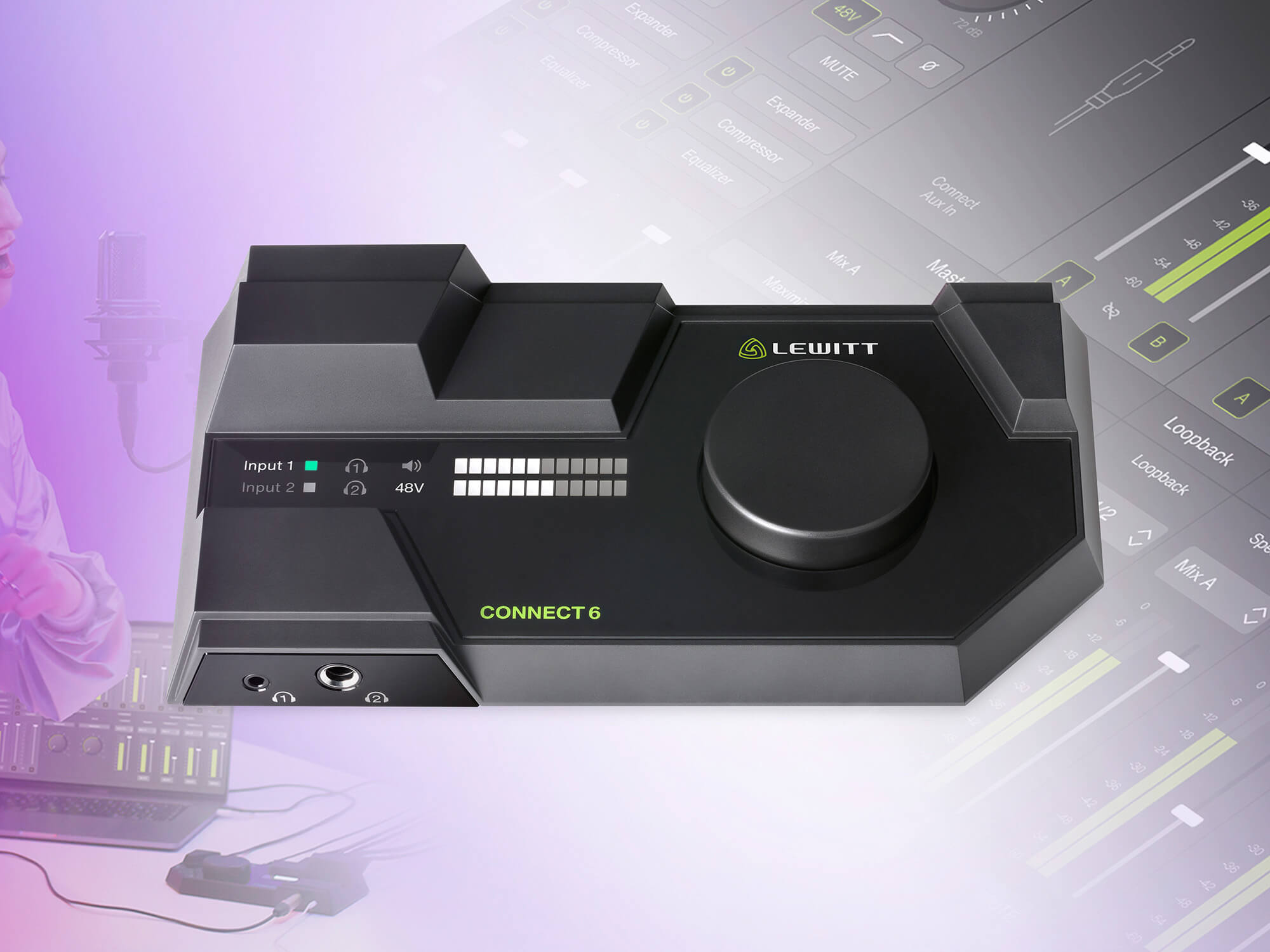
Review Overview
Our rating
8
Our verdict
⊕ Mobile I/O handled like any other input/output
⊕ Input processing ideal for spoken-voice conditioning
⊕ Auto Setup configures mic/line inputs, including expansion and compression
⊕ Striking and stylish design
⊕ Control Centre software easy to use
⊖ Aux input’s fixed gain too low
⊖ No input panning
Founded in 2009 with the aim of shaking up the microphone market, Lewitt may be the last company you’d expect to release an audio interface. But when you realise that Connect 6, its first, is aimed squarely at content creators – a market in which Lewitt’s visually striking and sonically pristine mics are particularly popular – it starts to make sense.
Spot the difference
In a broadcast situation, you’ll need to deal with a variety of audio sources that differ from a recording studio. Rather than just musicians in a room, you’re likely to have a presenter and perhaps a guest or two in the studio, as well as remote guests joining via phone or video call. You may need to include pre-recorded music or video, and the various people involved in a show may need to hear different mixes of each of these sources. Sometimes you’ll be producing a pre-recorded show, and so passing all of these sources to recording software for later processing and mixing; other times you may be live streaming, and need to process and mix all of these sources on the fly.
You can, with additional hardware, some adapters and some improvisation, do all of this with most studio interfaces. With its Connect 6, however, Lewitt delivers an elegant all-in-one solution that addresses these same requirements.
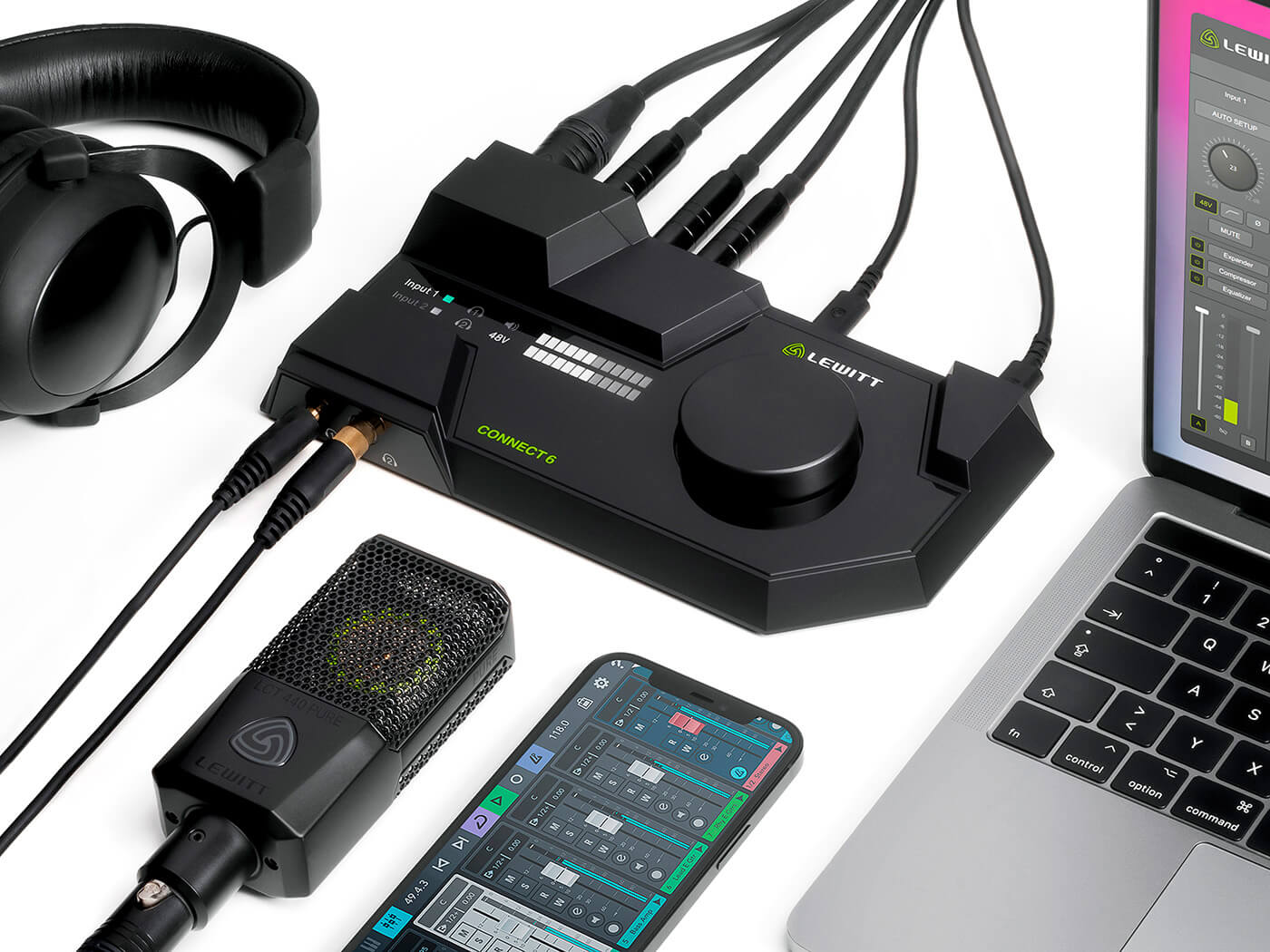
Shrink-wrapped
Reminiscent of mid-1980s games consoles, the Connect 6’s slim yet lumpy exterior essentially shrink-wraps the interface’s circuit board and connector mountings. It feels sturdy, yet somehow sleeker and less physically obtrusive than many other desktop interfaces. The hard lines may not be to everyone’s taste but we love how it looks and feels.
None of the unit’s protruding parts get in the way of the large rotary dial (though might serve to protect it from inadvertent knocks and bumps). This dial allows all of the input and output levels to be set directly from the hardware and, in conjunction with the indicator lights and metering, allows the whole interface to work as a standalone mixer, with no need for a host computer or device.
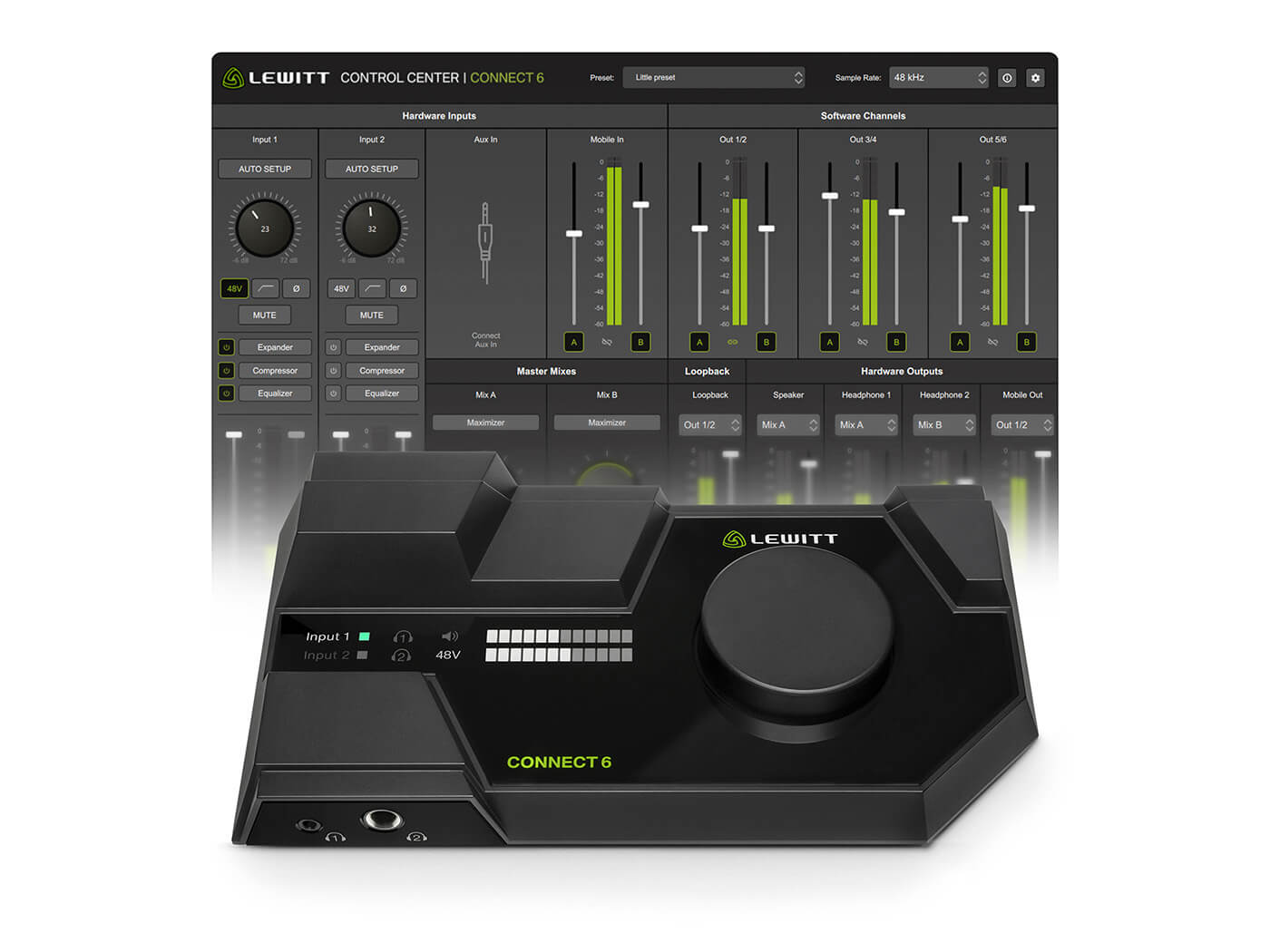
Mine host
Most people will use the interface with a host device, of course. The Connect 6 works with mobile devices but its entire feature set is only available when hooked up to a Mac or PC running the included Control Centre software. This allows you to create two independent mixes of the various input channels, and route these – or any other source – to the system’s output busses.
Physical inputs come in the form of a pair of XLR/jack combo connectors that allow for the connection of mic and line-level signals. These input channels boast high-quality, low-noise preamps with individual phantom power, high-pass filters and phase flip. More impressive is the onboard DSP processing that gives each channel an expander, compressor and equaliser – the perfect combo for handling speech.
These processors offer the detailed settings you’d expect to find in a decent DAW plugin. As such, you may think Lewitt is expecting too much of content creators by asking them to delve into the details of audio engineering. Not so – both channels have an Auto Setup feature that configures everything other than the EQ.
Notable by their absence, though, are pan controls. Arguably, these aren’t so important in a broadcast situation, but their absence may still prove problematic if users hope to host a show with multiple participants.
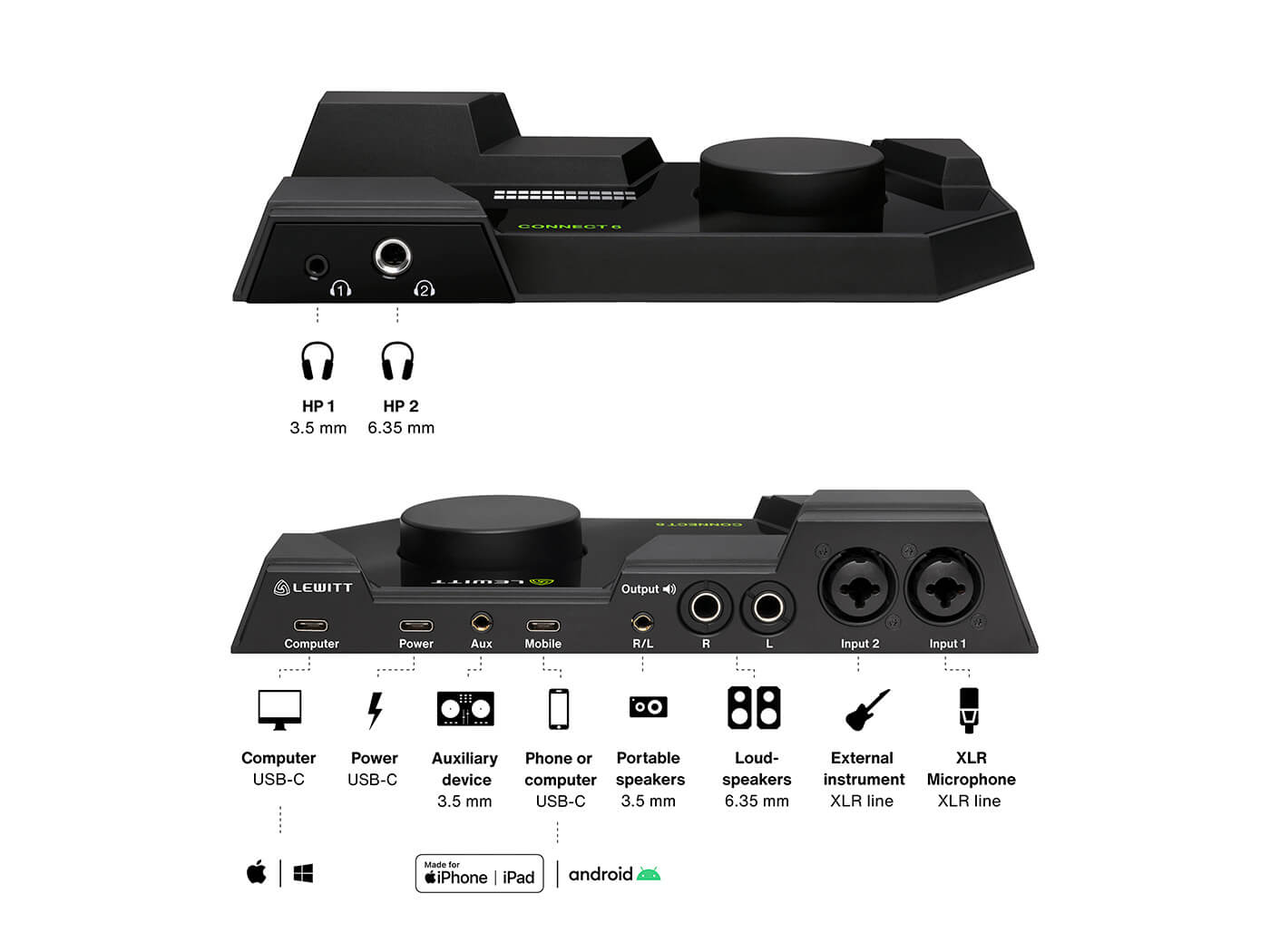
Mobile I/O
Alongside the mic/line inputs is a stereo mini-jack socket for connecting to the auxiliary input channel. The fixed input gain provided by this channel is too weak for line level signals, and only just strong enough for the signals sent by, for example, a laptop’s headphone output. It’s hard to say exactly what Lewitt expects this channel to be used for.
What is clear is that the auxiliary input is not intended for connecting phones or tablets, because these get their own dedicated USB-C socket. This means the Connect 6 can operate as an audio I/O box for mobile devices, but also lets you pass audio back and forth between a mobile device and the Control Centre mixer. The practical upshot is that you can easily bring in phone calls and other audio from your handheld, or use your phone or tablet as a camera and/or live streaming device without compromising your audio setup or quality.
The Control Centre software provides three additional internal stereo busses. These can be accessed by software running on the host computer, and allow the audio output from that software to be mixed into your show. Similarly, on the output side of things, an internal stereo loopback bus allows any source or mix to be routed to another software application for recording or streaming.
Control Centre’s remaining output channels feed the hardware’s main left and right output jacks, the 3.5mm headphone jack, the 6.35mm headphone jack, and the USB-C mobile connector. The source for each bus can be selected from any of the input sources, or either of the two mixes. There’s a bit more processing available here too, with a Maximiser process available to each mix. This boosts the volume and applies a limiter to the mix, but the only way to control the process is by adjusting the mix level to determine how hard it’s driven into the limiter.
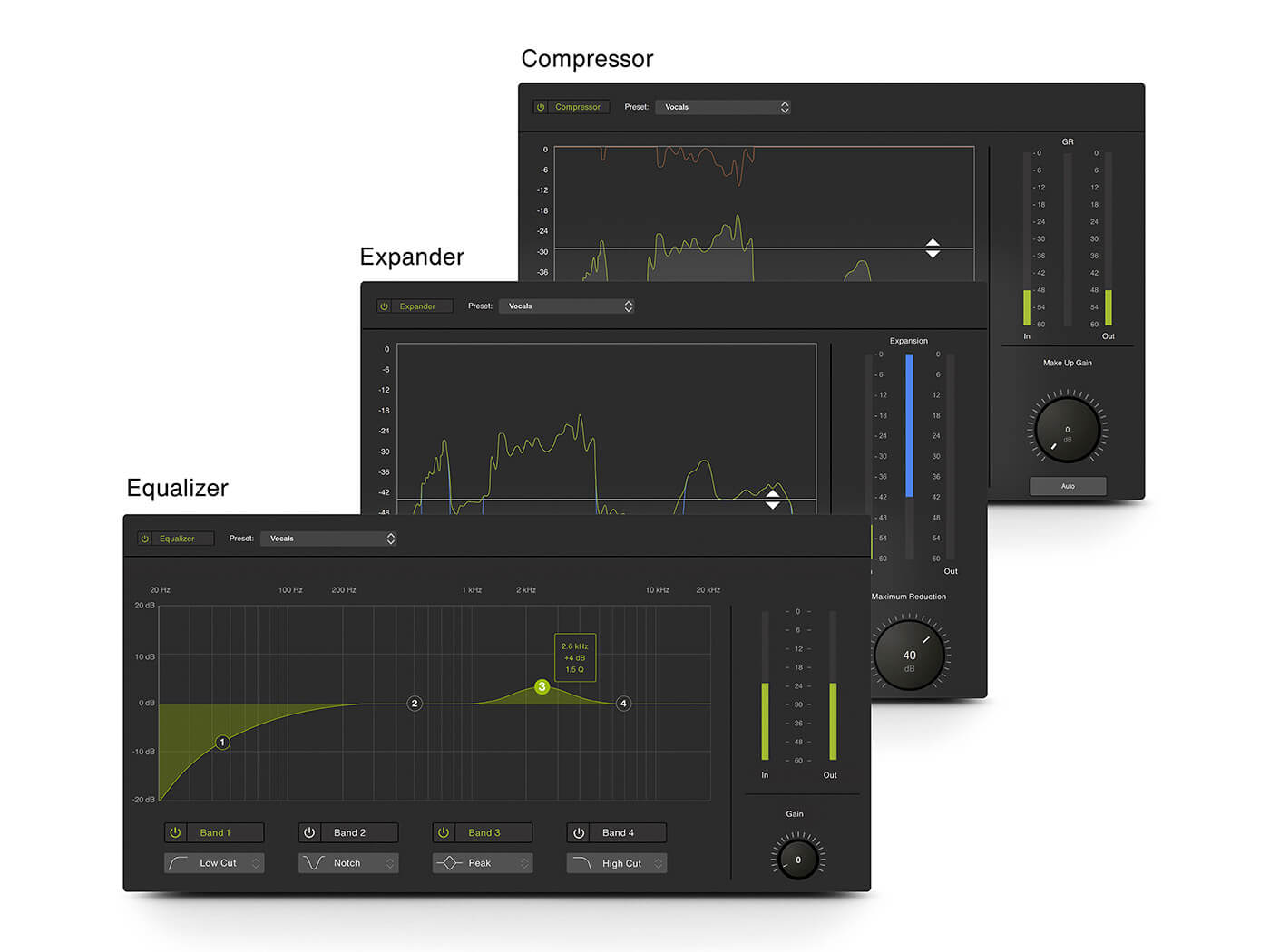
Conundrums solved
The Connect 6 system allows for a lot of flexibility in creating different mixes and feeds, and is simple to set up thanks to the Control Centre’s clear and logical layout. The built-in processing is a godsend for live streaming, addressing the problem of how to apply appropriate voice input conditioning and output level protection without introducing lag between video and audio.
Lewitt’s most ingenious idea here, however, is perhaps the dedicated mobile device I/O. Many modern interfaces can function as audio I/O for tablets and phones, but typically this comes in place of using the interface with a desktop or laptop. By treating your mobile device as just another input and output bus, the Connect 6 is made vastly more flexible than it otherwise would be, and remedies a whole host of content creation conundrums in the process.
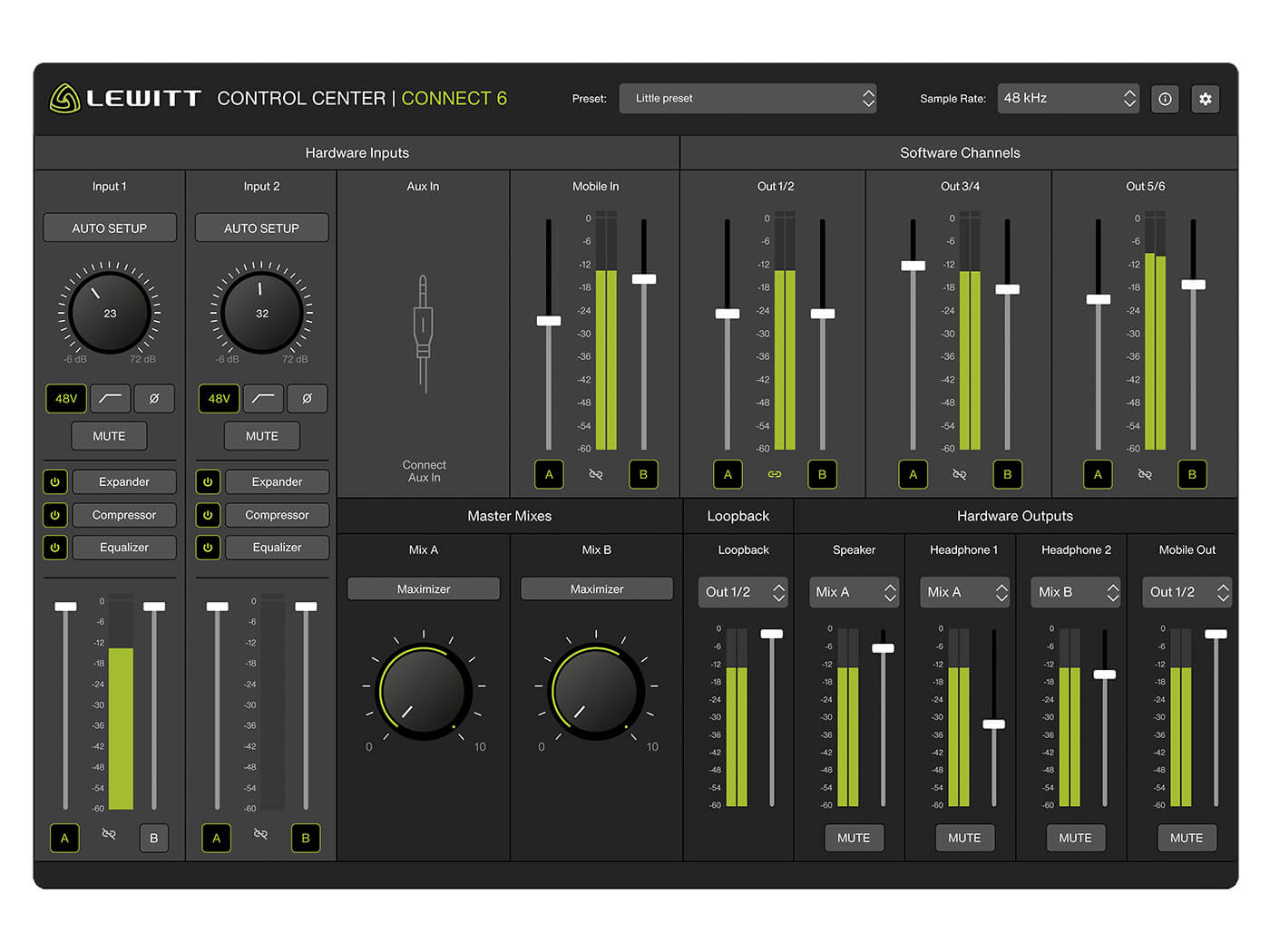
Key Features
- Audio interface for macOS 10.15+ and Windows 10
- Standalone operation possible
- USB-C host, mobile and power connectors
- Two USB cables included
- Two mic/line inputs with onboard DSP effects
- Stereo auxiliary input
- Three internal stereo busses
- Audio I/O for mobile devices, with or without host computer
- Stereo monitor output
- Two independent headphone outputs
- Stereo loopback bus
- Easy routing and mixing via Control Centre software
- Supports sample rates up-to 96kHz
- £259
- Contact Lewitt Audio
- Buy: Andertons, Bax Music